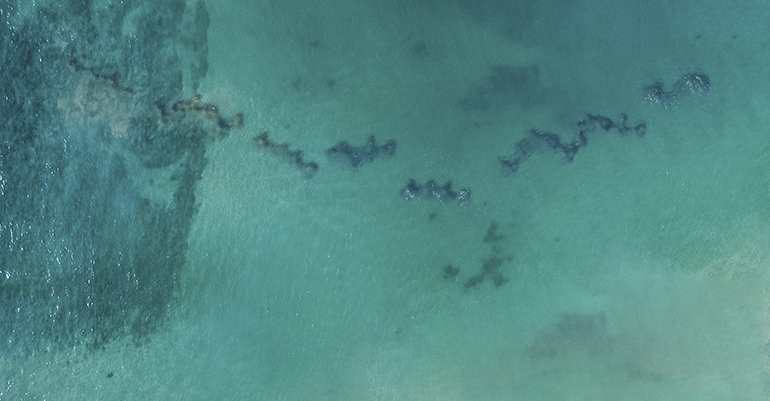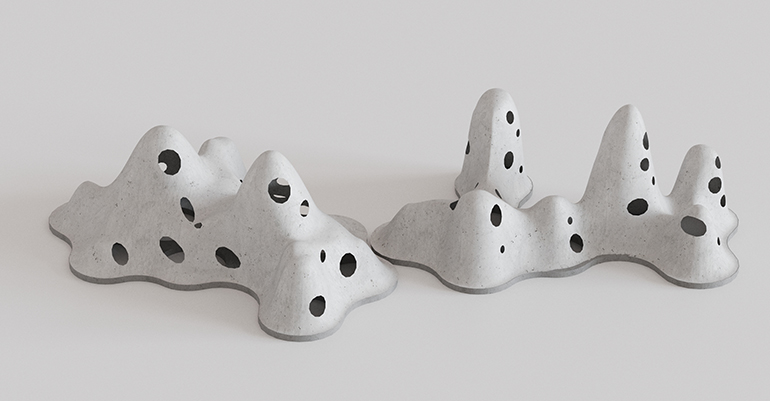Artificial Reefs
Rover develops artificial reefs capable of reducing the carbon footprint and favouring the growth of marine flora and fauna.
This pioneering project reduces the carbon footprint of its manufacture by 30% compared to the standard, doubles the fixing of CO2 on the seabed and is designed to promote the proliferation of native marine fauna.
Rover Group has developed and conducted the research project "Living Ports: Maritime infrastructures of sustainable concrete to favour the growth of marine flora and fauna" which, jointly with the Universitat Politècnica de València, Universidad Católica de Valencia and the support of the Valencian Agency of Innovation, has managed to achieve artificial reefs from a concrete that reduces up to 30% its carbon footprint compared to the standard, doubles the fixation of CO2 on the seabed and promotes the proliferation of marine fauna with an environmentally compatible design.
Concrete-based coastal and maritime infrastructures, vital for the economic development of our society, are placed in natural habitats that may disrupt the existing marine flora and fauna.
To minimise these effects, in the pioneering Living Ports project "a technology for adapting these maritime-port infrastructures to natural environments and climate change has been developed, since one of its consequences is the constant erosion and retreat of the sand on our coasts", emphasises Alfredo Rodríguez, president of Rover.
Its design has taken shape with two complementary objectives, as Lisardo Fort, head of R&D at Rover, points out, "on the one hand, the reduction of the carbon footprint through the use of recycled materials and, on the other hand, the capability to promote the growth of marine flora and fauna thanks to an innovative design".


A new concept for coastal protection infrastructures.
Thus, the new sustainable concept for these harbour shelter or coastal protection infrastructures is based on the formulation of a concrete matrix with a reduced carbon footprint, maintaining to the same or better technical performance of a standard concrete and on the design with a number of amendments at micro-surface and macro-structural level, to increase the capability of proliferation of native species.
Following initial laboratory tests, a range of prototypes with different material compositions, different designs (vertical wall and pyramidal) and different functionalities to represent various maritime or port applications were produced. These prototypes, placed in Puerto de Sagunto, are monitored by Rover Maritime's underwater ROV systems (unmanned underwater robot), which periodically carry out immersions.
The main results obtained to date include a reduction of up to 30% in their carbon footprint compared to the standard, the achievement of a binary material-design system that almost doubles the fixation of CO2 on the seabed and the achievement of a design that favours the proliferation of local fauna.
In an example, such as the application as coastal protection of a beach like Pinedo (Valencia), these sustainable structures, with a protective function, would additionally fix more than 1.5 tonnes of CO2 of local seaweed with just the first cycle of settlement.
The project was recently presented by Rover in Altea within the conference 'Innovation for the Sustainability of the Coast in the face of Climate Change', which brought together more than 600 professionals from the public and private sectors.


